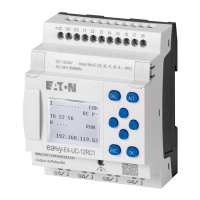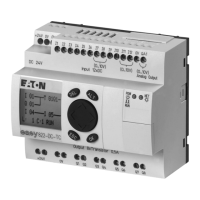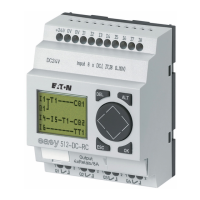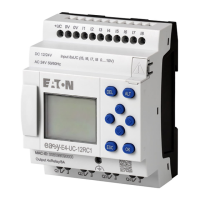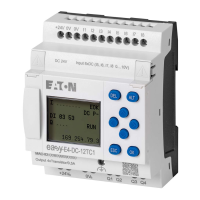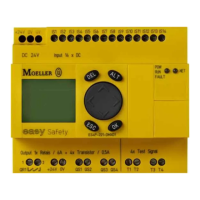2 Installation
2.5 Connecting inputs
34 Operating instructions 05/10 MN05013003Z-EN www.eaton.com
2.5.1.3 Cable lengths
Severe interference can cause a signal 1 on the inputs without a proper
signal being applied. Observe therefore the following maximum cable
lengths:
With longer cables you can, for example, connect a 1A diode (e.g. 1N4007)
with a blocking voltage of at least 1000 V in series with the easy input.
Ensure that the diode is pointing towards the input as shown in the circuit
diagram, otherwise easy will not detect the 1 state.
Figure 14: AC input with suppression diode for easy-AC and easy-AB
easy-AC:
Inputs I7 and I8 have a higher input current on the easy-AC. Neon bulbs with
a maximum residual current of 2 mA/1 mA at 230 V/115 V can be connected
to I7 and I8.
Two-wire proximity switches have a residual current with the “0” state. If
this residual current is too high, the easy input may only detect a “1” signal.
Use therefore the inputs I7, I8. An additional input circuit is required if more
inputs are needed.
I1 to I6 40 m without additional circuit
I7, I8 100 m without additional circuit
I9 to I12 40 m without additional circuit
R1 to R12
→
Always use neon bulbs that are operated with a separate N
connection.
WARNING
Do not use reed relay contacts at I7, I8. These may burn or melt
due to the high inrush current of I7, I8.
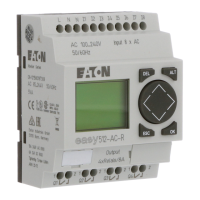
